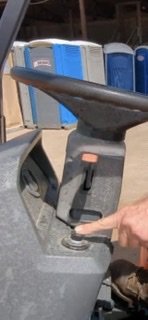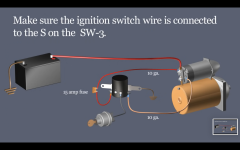So, this would not be alarming to you?
No, I'd want to look over the installation, but I might actually prefer it.
Using one switch to do everything isn't an advantage. It was just the style for awhile, and made little sense electrically or mechanically.
There's a place for key switches. It's a nice safety & privacy device to use to turn on low amperage circuits and activate relays. Older cars and trucks and tractors had it right: a key for the low amperage circuits plus any relays - like glow plugs on a timer relay.
In that application, a key switch is good for low current, inexpensive, and lasts just about forever.
But you still need something to handle the starter and a push button is fine.
For the starter operation adding a momentary contact push button to pass the higher current to the starter makes sense because it is simple and keeps the higher amp starter circuit fom being acidentally energized if the ignition switch fails. For the same reasons of safety, simplicity, and economy the entire lighting circuit was usually also on a separate switch too... It's common to use a dashboard pull switch for that.
Switch failures were just about unknown on those older multiple switched systems on the dashboard.
When they began to put everything into one switch it became complicated to find enough space for the various springs, detents, and high amp contacts. As of result of making it all undersized and packing it into a small container, that old keyed ignition switch went from a dependable ten dollar item to an undependable hundred dollar item.
After designing mechanical/electrical interfaces for awhile, my opinion is that in order to properly design a mutlitple function ignition switchproperly it would end up being much more expensive than it need be.
And even so, it never would have had the advantages of simple separate switches.
rScotty


